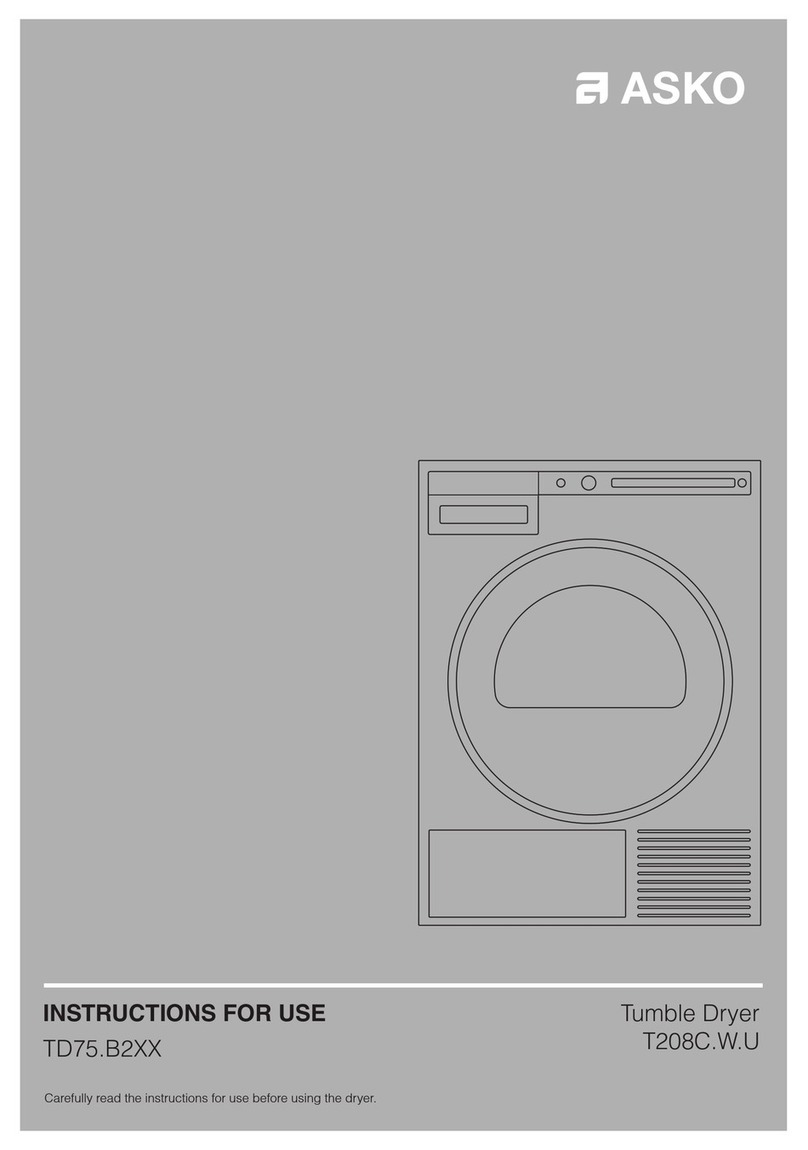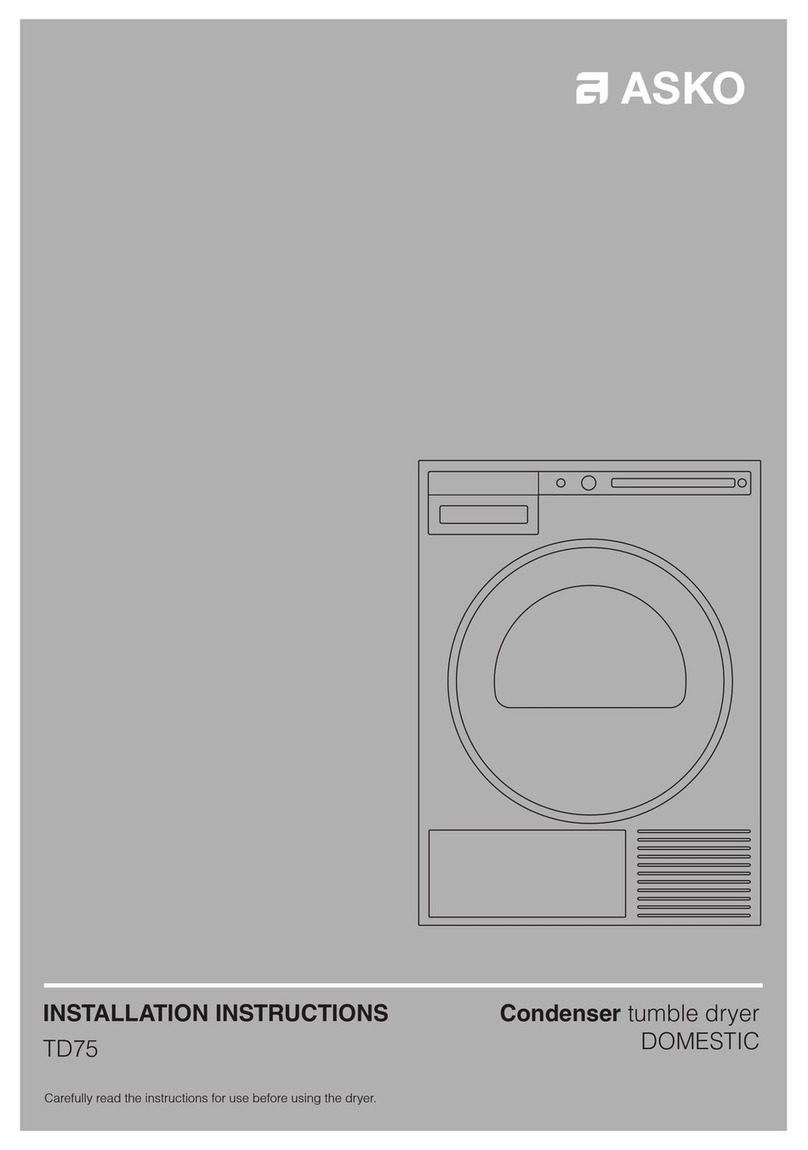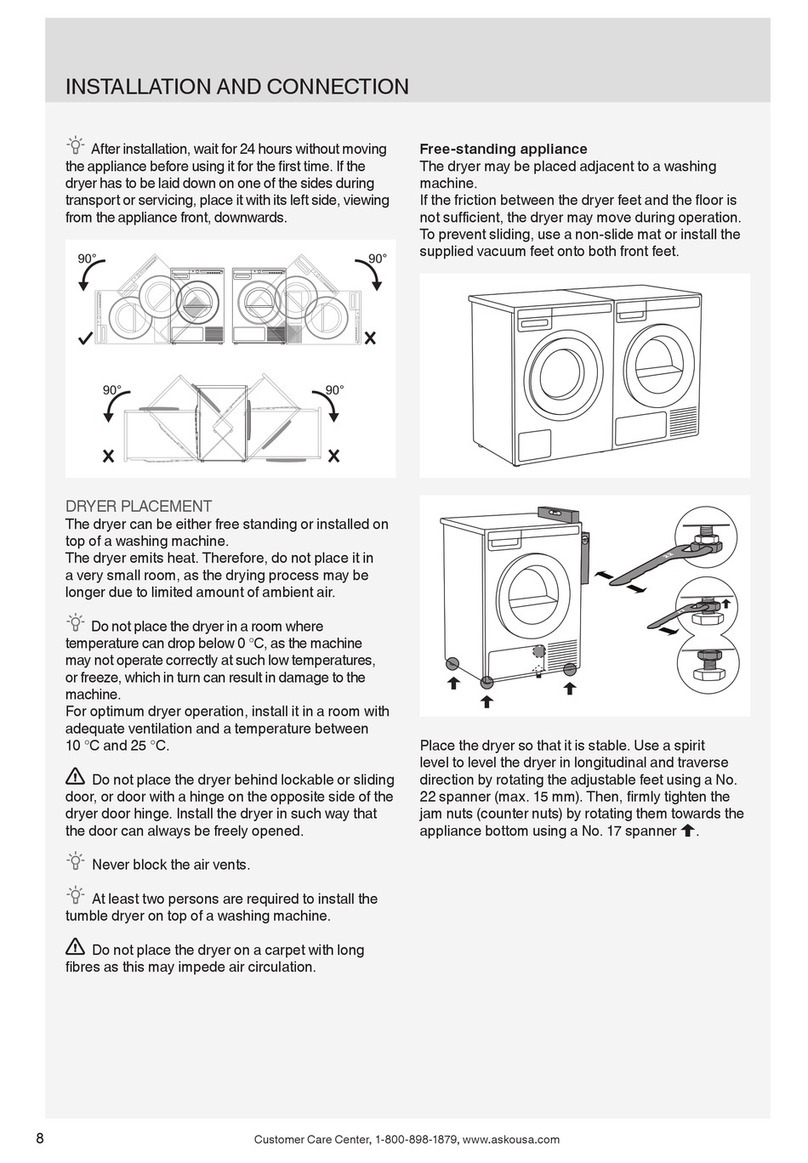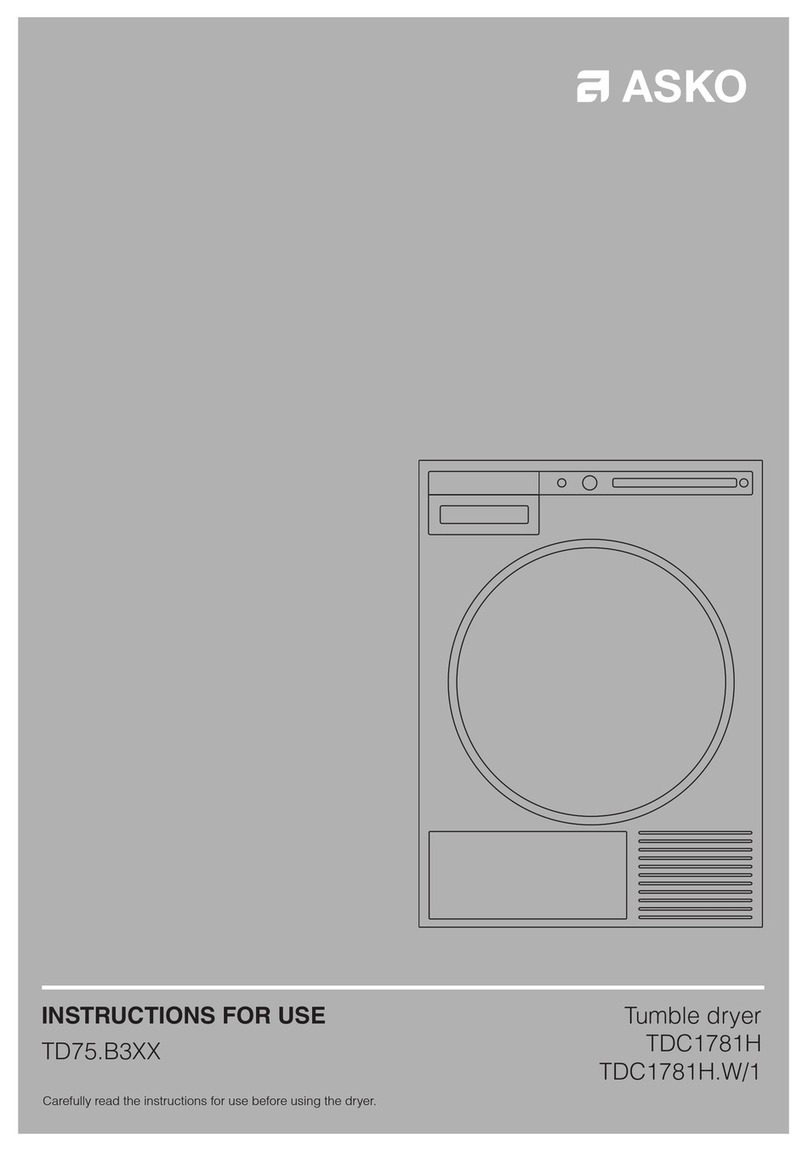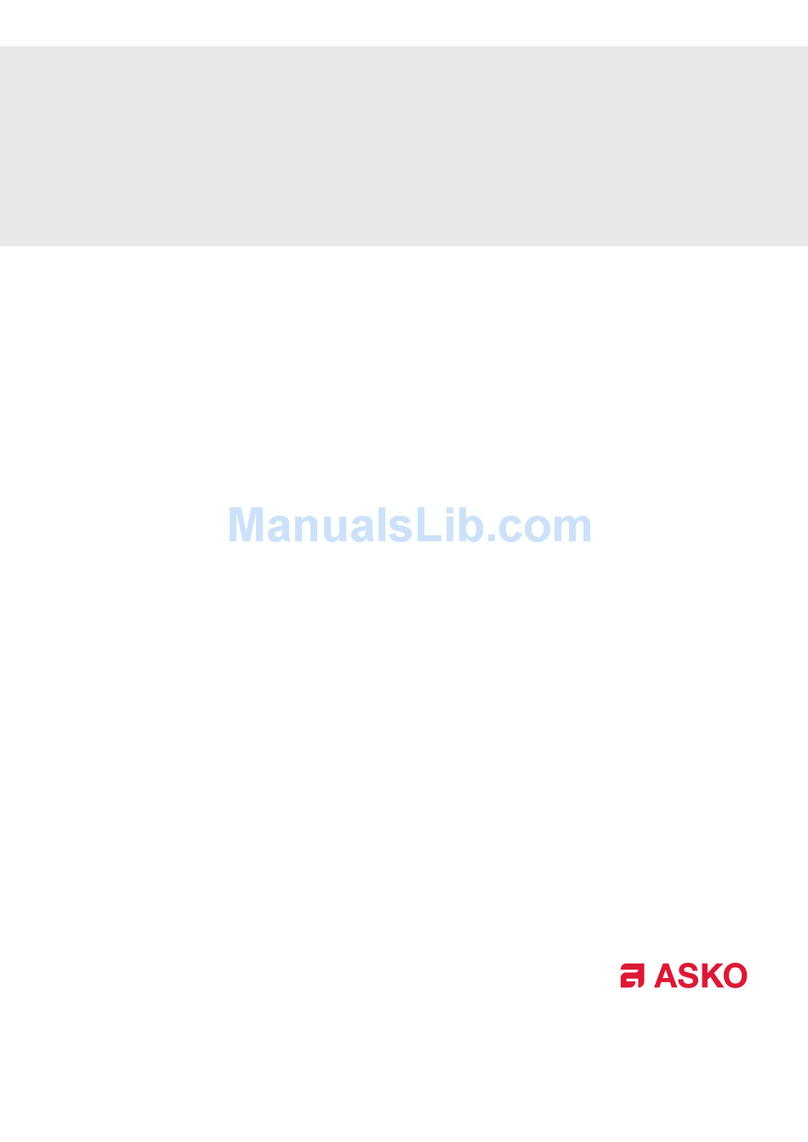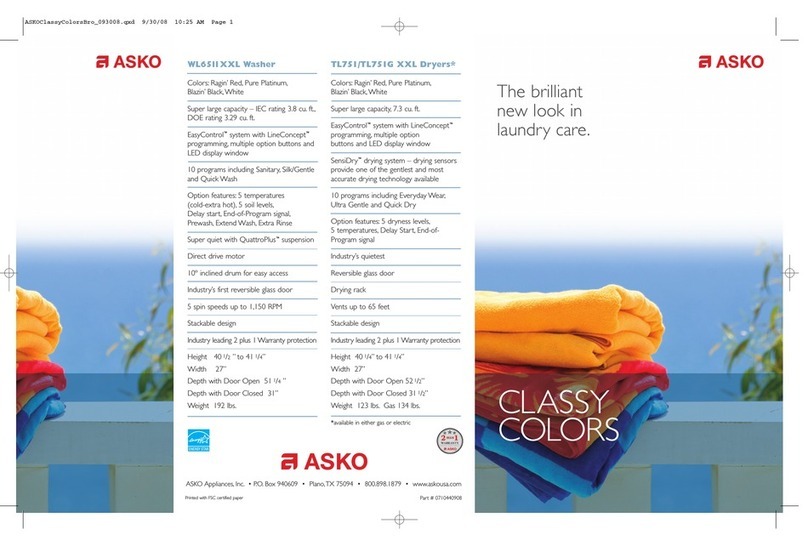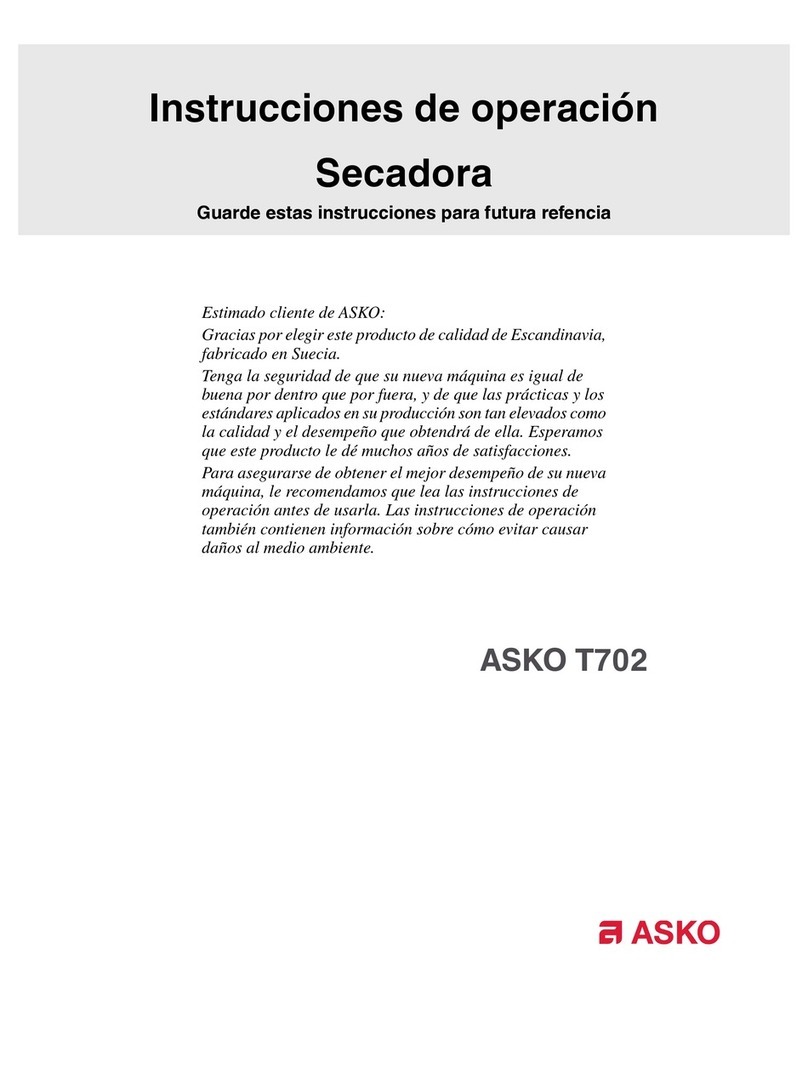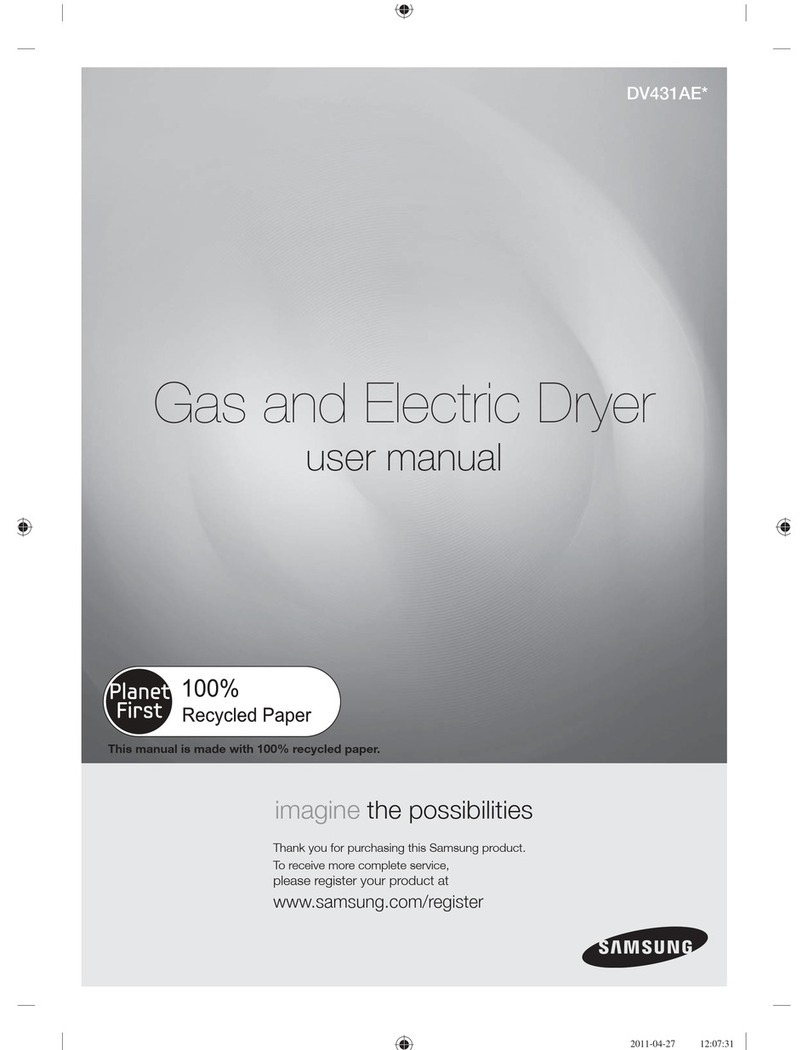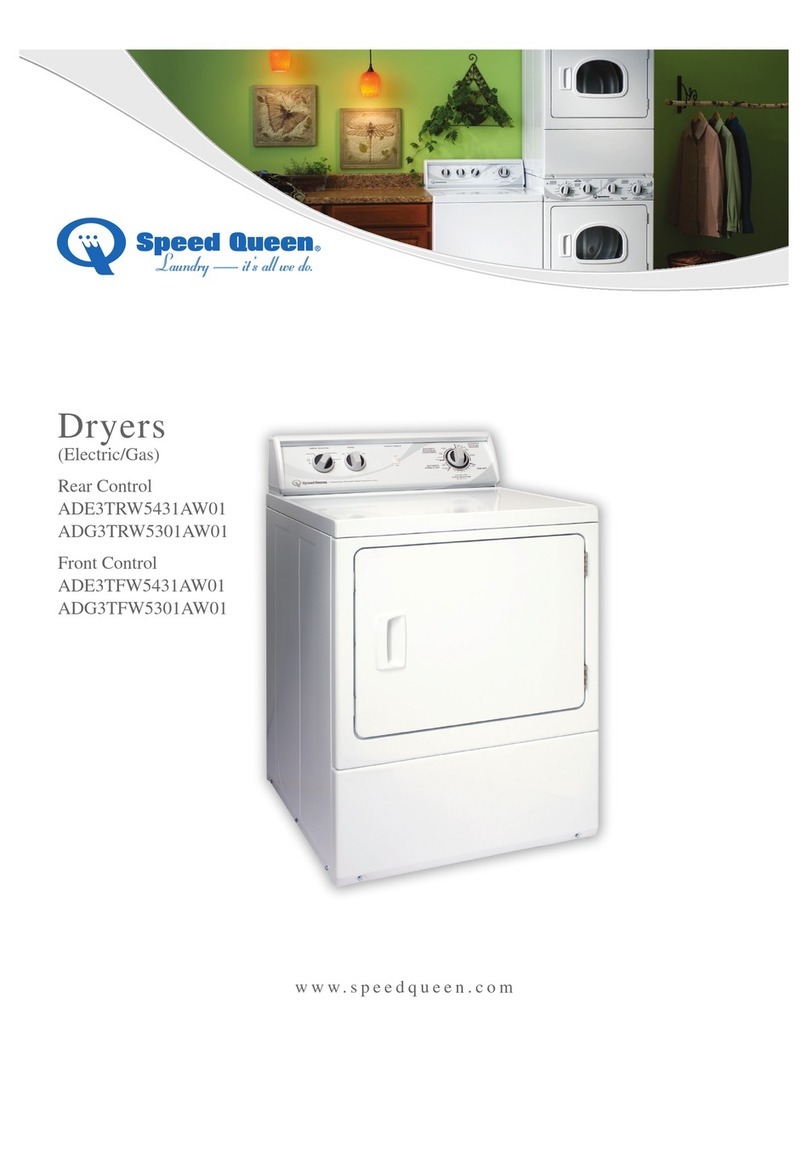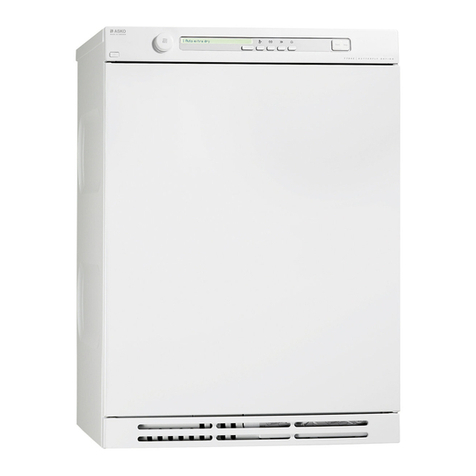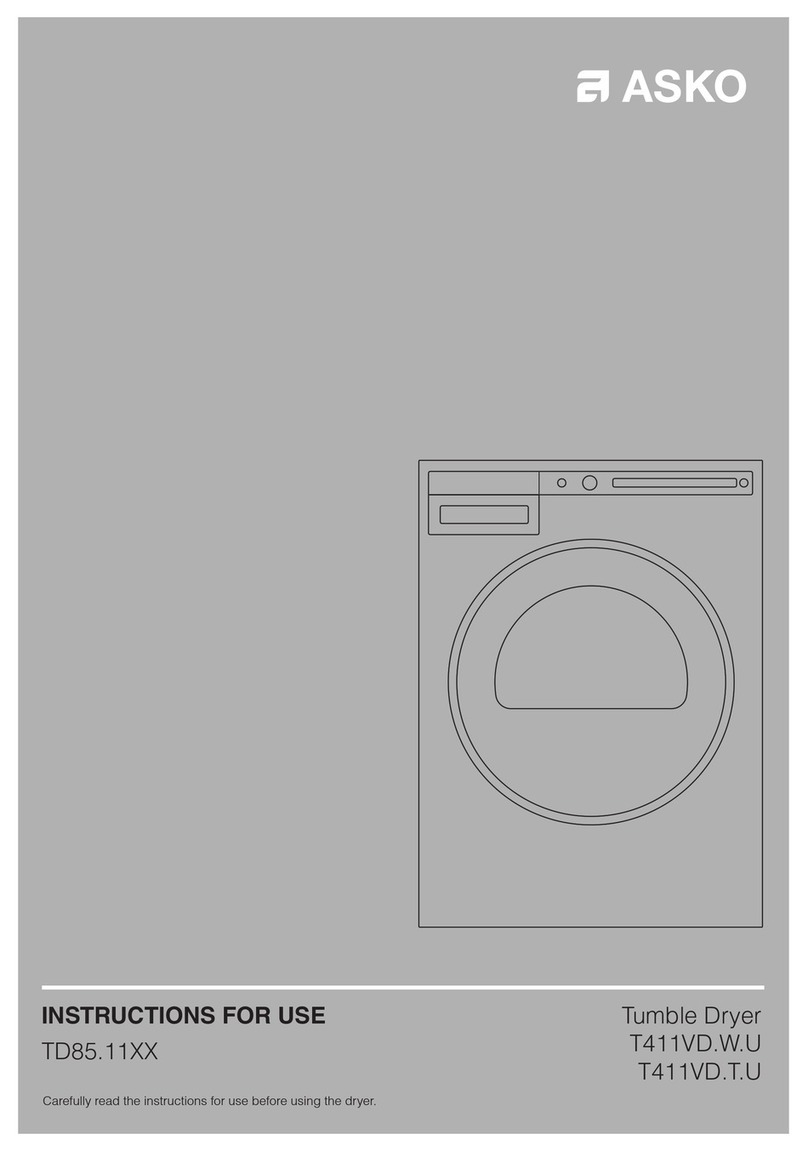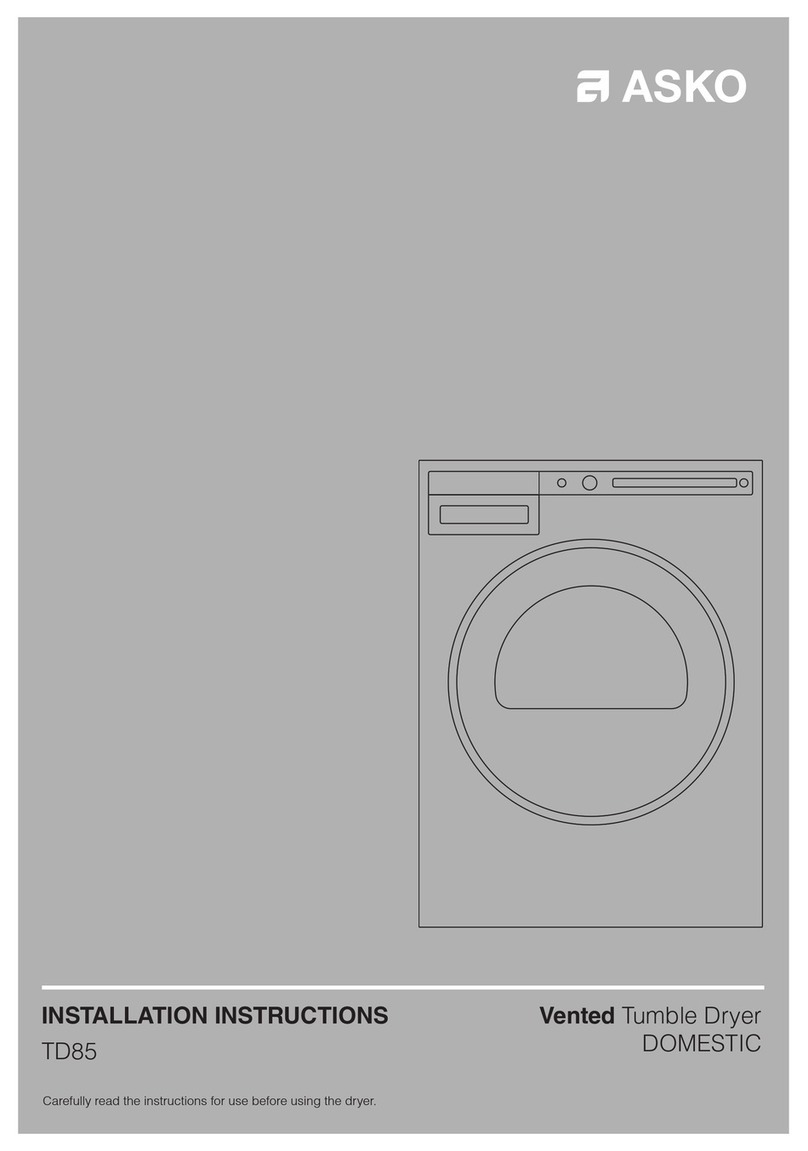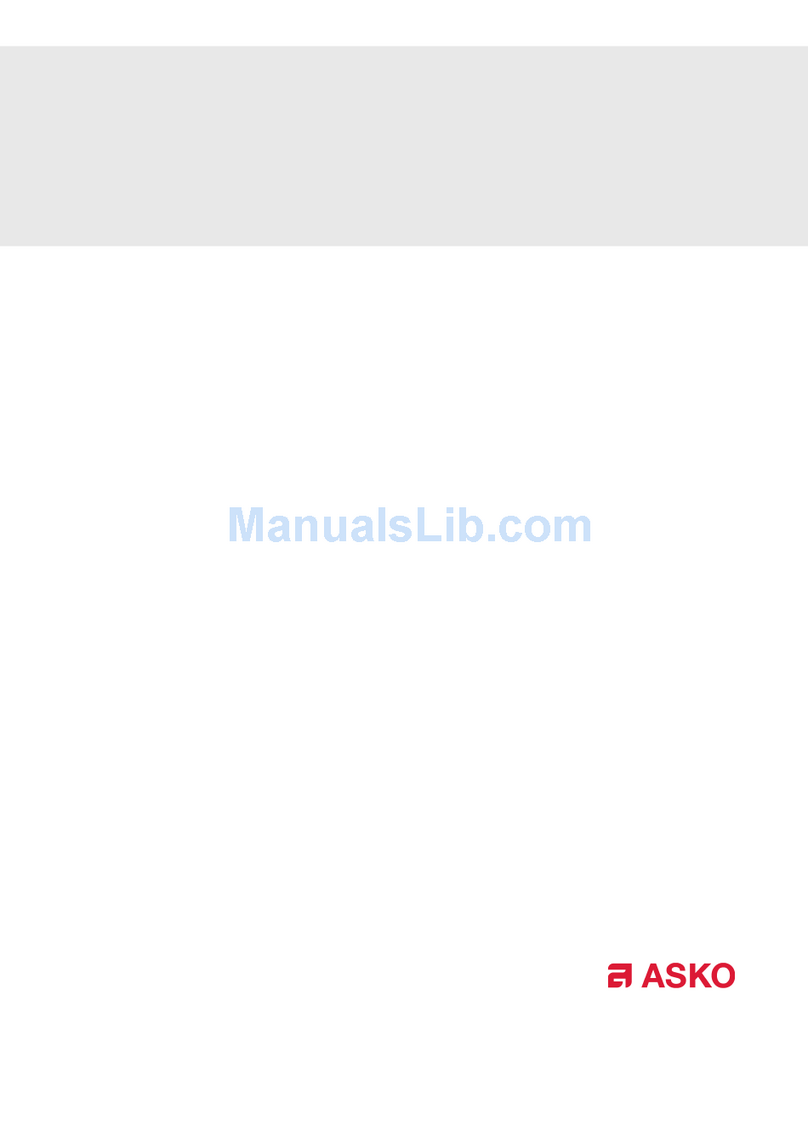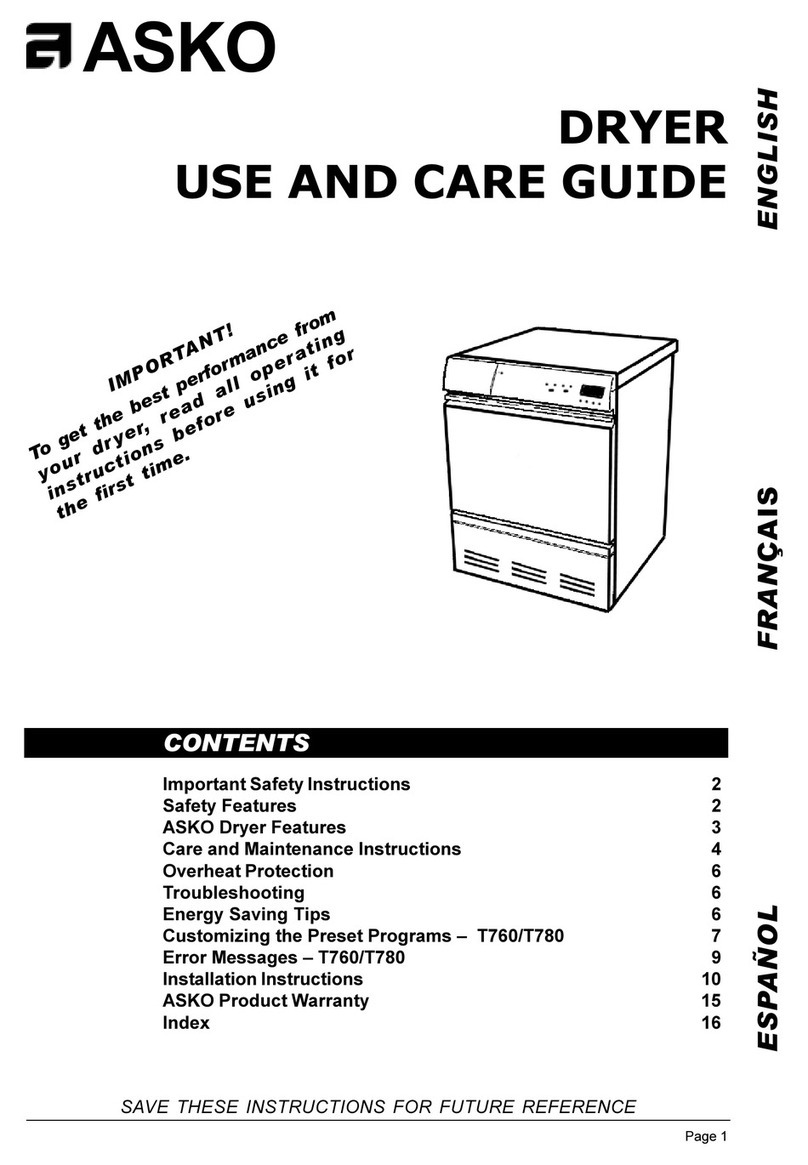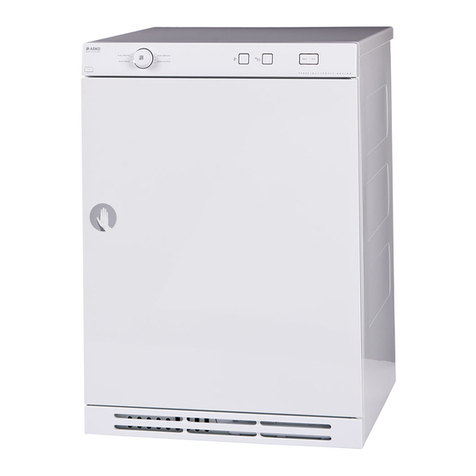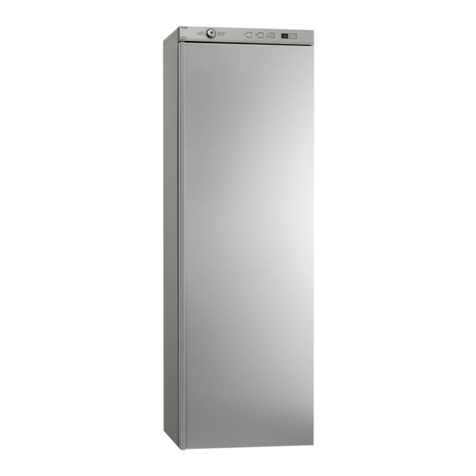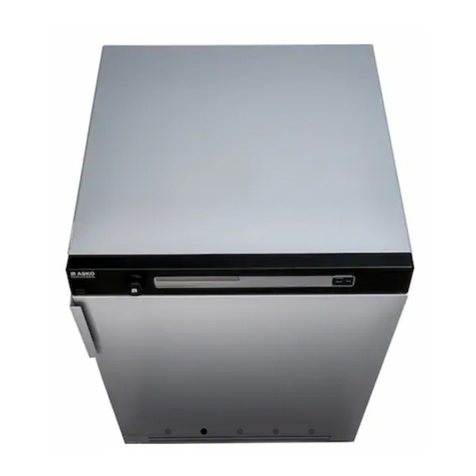3
T700 AND T760 – VENTED DRYERST700 AND T760 – VENTED DRYERS
T700 AND T760 – VENTED DRYERST700 AND T760 – VENTED DRYERS
T700 AND T760 – VENTED DRYERS
These models are vented dryers; therefore, they
requiredoutsideventingforaproperinstallation.
Room temperature air is heated by the heating
elementanddrawnintothedrum,whereitextracts
thedampness fromtheclothes.Thepaddles inthe
drumpreventtheclothesfromstickingtoeachother.
Air passes through the lint filter in the front door,
throughtheexhaustsystemandouttheexhaustvent.
On Model T700, on the way through the air
extractionsystem,theairpassesoverthethermostats.
Thethermostatsmeasurestheexhausttemperature
as it leaves the dryer. When using the automatic
program,thethermostatsindicatewhentheclothes
aredry.
On Model T760, on the way through the air
extractionsystem,theairpassesahumiditysensor.
The sensor measures the amount of humidity in
theclothes.Ifyouareusinganautomaticprogram,
thesensorindicateswhentheclothesaredry.
THE DRYING PROCESS
T720 AND T780 – CONDENSING DRYERST720 AND T780 – CONDENSING DRYERS
T720 AND T780 – CONDENSING DRYERST720 AND T780 – CONDENSING DRYERS
T720 AND T780 – CONDENSING DRYERS
These models are non-vented, condensing dryers
thatareusedinareaswhereventingisnotpossible.
Condenserdryershavetwocirculationsystems:one
for drying air and one for cooling air. In the
following illustration, the black arrows show the
warm drying air, and the white arrows the cooling
airatroomtemperature.
1. Room temperature air
2. Air that has been heated.
3. Maist air going through the lint filter
4. Air passing the thermostats
5. Air going out the exhaust
Model T720 is a timed dryer only. The user sets
the amount of time for the dryer to run.
Thedrumpaddlespreventtheclothesfromsticking
toeachother.Onthewaythroughtheairextraction
system,theairpassesahumiditysensor.
Model T780hasasensorthatmeasurestheamount
of humidity in the clothes. If you are using an
automatic program, the sensor indicates when the
clothesaredry.
DRYING AIRDRYING AIR
DRYING AIRDRYING AIR
DRYING AIR
Room temperature air is heated by the heating
element and passes through the drum, where it
blowsthroughtheclothesandextractsthedampness
from them.
Theairisfilteredthroughthelintfilterinthefront
door, goes down to the fan and onwards to the
condenserunit.
Onitswaythroughthecondenserthesaturatedair
releasesitswater content.The extractedwater falls
intoaholder,fromwhichitiseitherpumpedupto
awater tankortakenoutviaadrainhose toafloor
drainorsimilar.
COOLING AIRCOOLING AIR
COOLING AIRCOOLING AIR
COOLING AIR
Thecondenseriscooledbyairatroomtemperature,
drawninthroughtherearofthemachine.Theairis
blownthroughthecondenserandexhauststhrough
a grill in the bottom hatch. If the machine is built
into a cabinet, the air is drawn through the gap
between the floor and the bottom of the machine.
T700 and T760 Air Circulation
T720 and T780 Air Circulation
The black arrows
show the warm
drying air. The
white arrows
show the cooling
air at room
temperature.
